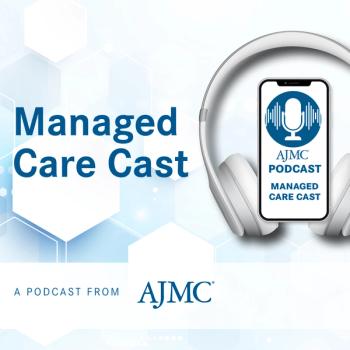
New Biomarkers Could Speed Up MS Diagnosis, Improve Care in US
Key Takeaways
- The kFLC index and CVS are now part of the 2024 McDonald criteria, improving MS diagnosis accuracy and timing.
- kFLC index measures immune-related proteins with high sensitivity, while CVS identifies MS lesions via specialized MRI techniques.
New biomarkers enhance multiple sclerosis (MS) diagnosis, enabling earlier detection and improved patient care, transforming MS management across the health care system.
Two new biomarkers are shaking up how doctors diagnose
A review
MS is a complex autoimmune disease that affects the central
Early diagnosis is key. The sooner MS is confirmed, the sooner treatment can begin—slowing progression and preserving quality of life. According to the National MS Society, about 2.8 million people worldwide have MS.4 Although the number is on the rise, scientists speculate this is because of people living longer, better diagnostic tools, and better criteria to diagnose people in groups that have been underrepresented in the past.
“Prevalence helps us better understand a disease and its impact…. Until we end this disease forever, we will do whatever it takes to accelerate breakthroughs,” wrote the National MS Society.
The present review pulled together findings from observational studies, clinical trials, and pathology research to assess how kFLC and CVS might help.1
- The kFLC index is a lab test that measures certain proteins involved in immune activity in the brain. It’s reproducible and more sensitive than older methods like the CSF IgG index, with studies showing sensitivities of 80% to 100%, depending on the threshold used.
- The CVS is a distinct MRI finding that highlights veins running through MS lesions. Using specialized imaging techniques like susceptibility-weighted imaging (SWI), doctors can identify lesions with central veins—an MS hallmark. A “Select-6” rule (6 or more CVS-positive lesions) offers strong diagnostic accuracy, even in patients with low lesion counts.
Both markers, when added to standard testing, help detect MS earlier and more confidently—especially in high-risk but not-yet-diagnosed individuals.
“Most of our knowledge about the kFLC index and CVS comes from patients with symptomatic disease. Evidence for the use of such biomarkers in pwRIS is scarce. Nevertheless, the inclusion of both biomarkers in the preclinical MS diagnostic work-up is supported by (1) the similarity of the results obtained in pwMS and pwRIS, (2) the high specificity reported in clinical disease, suggesting that their presence in asymptomatic patients reinforces MS diagnosis, and (3) the correlation of both biomarkers with others…already known to predict the course of the disease in its early stages,” the authors explained.
What This Means for US Health Care
The potential impact on clinical care is significant. With more accurate and earlier diagnosis, patients can start disease-modifying therapies sooner, which could help prevent long-term disability and reduce overall costs.
For clinicians, the kFLC test is easy to integrate into standard lab workflows, while CVS-based imaging could reduce the need for invasive spinal taps. Together, they offer a more efficient way to confirm MS—freeing up resources and cutting down on delays.
Given that more than 1 million Americans live with MS, improvements like these could go a long way in easing the burden on both patients and the health system.4
The review also noted that these biomarkers may help predict how MS will progress, guiding long-term treatment decisions.1 The updated 2024 McDonald criteria even include new anatomical zones, like the optic nerve, to better reflect where early disease can show up.3
The authors concluded, “Differential diagnoses in pwRIS are commonly represented by vascular white matter hyperintensity and headache disorders that are unlikely to present with a positive kFLC index or CVS-positive lesions. Therefore, both biomarkers will undoubtedly be beneficial in separating inflammatory versus vascular MRI lesions in asymptomatic patients and be very specific for preclinical MS diagnosis.”1
References
1. Levraut M, Landes-Chateau C, Mondot L, Cohen M, Lebrun-Frenay C. The kappa free light chains index and central vein sign: two new biomarkers for multiple sclerosis diagnosis. Neurol Ther. 2025;14(3):711-731. doi:10.1007/s40120-025-00737-7
2. Arrambide G, Espejo C, Carbonell-Mirabent P, et al. The kappa free light chain index and oligoclonal bands have a similar role in the McDonald criteria. Brain. 2022;145(11):3931-3942. doi:10.1093/brain/awac220
3. Amin M, Nakamura K, Daboul L, O’Donnell C, Cao Q, Rodrigues P, et al. Incorporation of the central vein sign into the McDonald criteria. Mult Scler Relat Disord. 2025;93:106182. doi:10.1016/j.msard.2024.106182
4. MS prevalence. National MS Society. Updated June 2025. Accessed July 17, 2025.
Newsletter
Stay ahead of policy, cost, and value—subscribe to AJMC for expert insights at the intersection of clinical care and health economics.







































